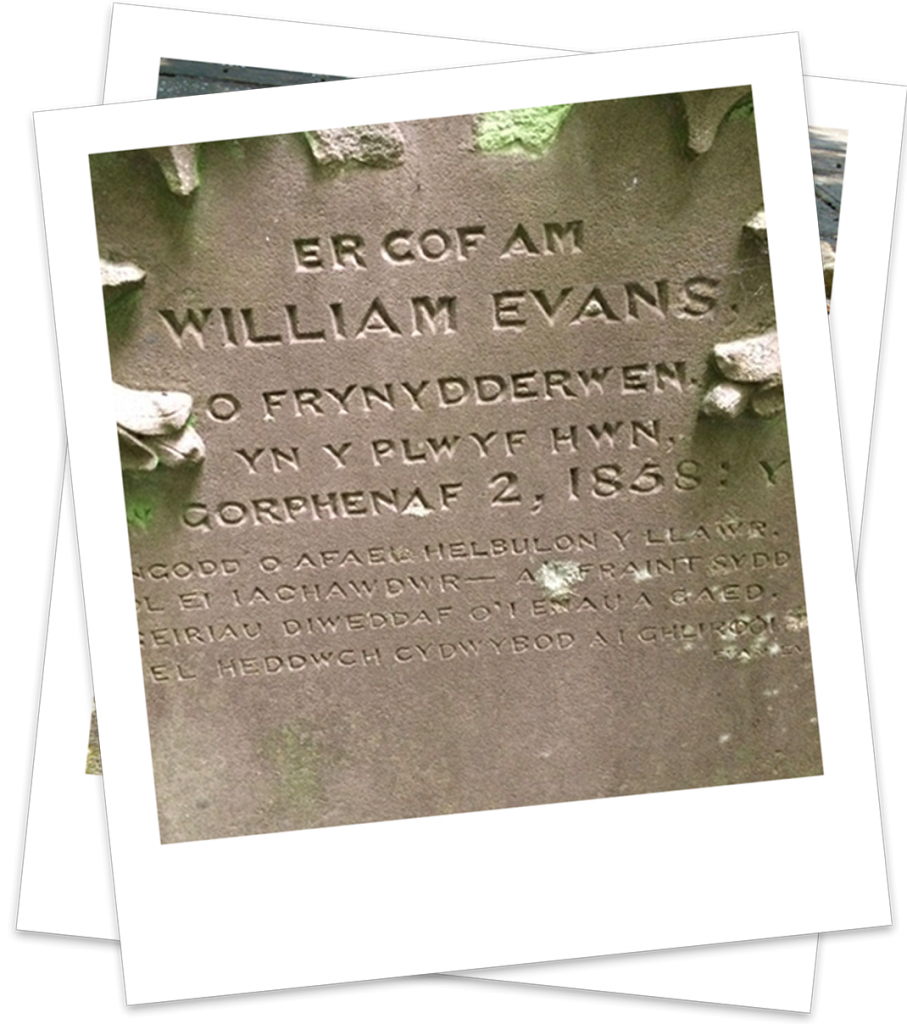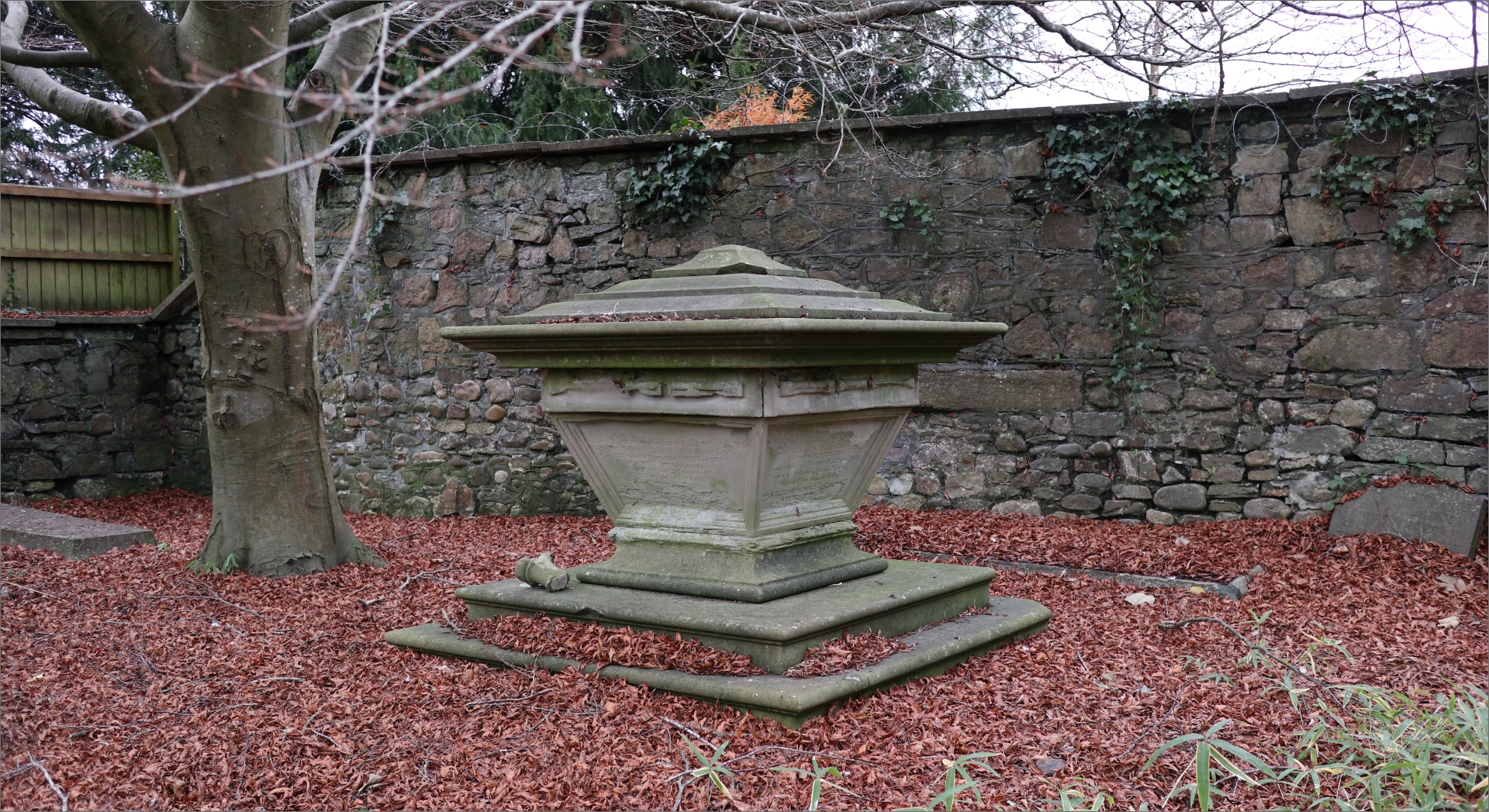
10 Historical Churchyard Features
10 Historical Churchyard Features
The Garden was designed as a small arboretum under-planted with shrubs. The numbers on the plan show the location of the historical features listed below:
1 Common Yew (400 yrs. old)
2 Irish Yew
3 15th century porch and entrance
4 Christening font
5 The Chancel
6 The Booker Tomb
7 The Lewis Tombs
8a Thomas Mathew’s Grave
8b Infant Grave
9 Llewellyn Llewellyn’s Grave
10 Welsh Language Gravestone
For further information on the Trees and Shrubs planted in St. Mary’s Gardens click the button below.
While most of the trees in the Gardens were planted in the 1970’s when it became an Arboretum, two Yew Trees remain from the period when St. Mary’s was active as the local Church and graveyard. The Common Yew [1] was planted in 1641, making it 400 years old.

The Irish Yew [2], to the right of the lychgate as you come in, is a mere 150 years old. It goes back to Victorian times when there was a population explosion in Whitchurch which made the church too small for the congregation, despite alterations being made. The churchyard too became overcrowded with graves.
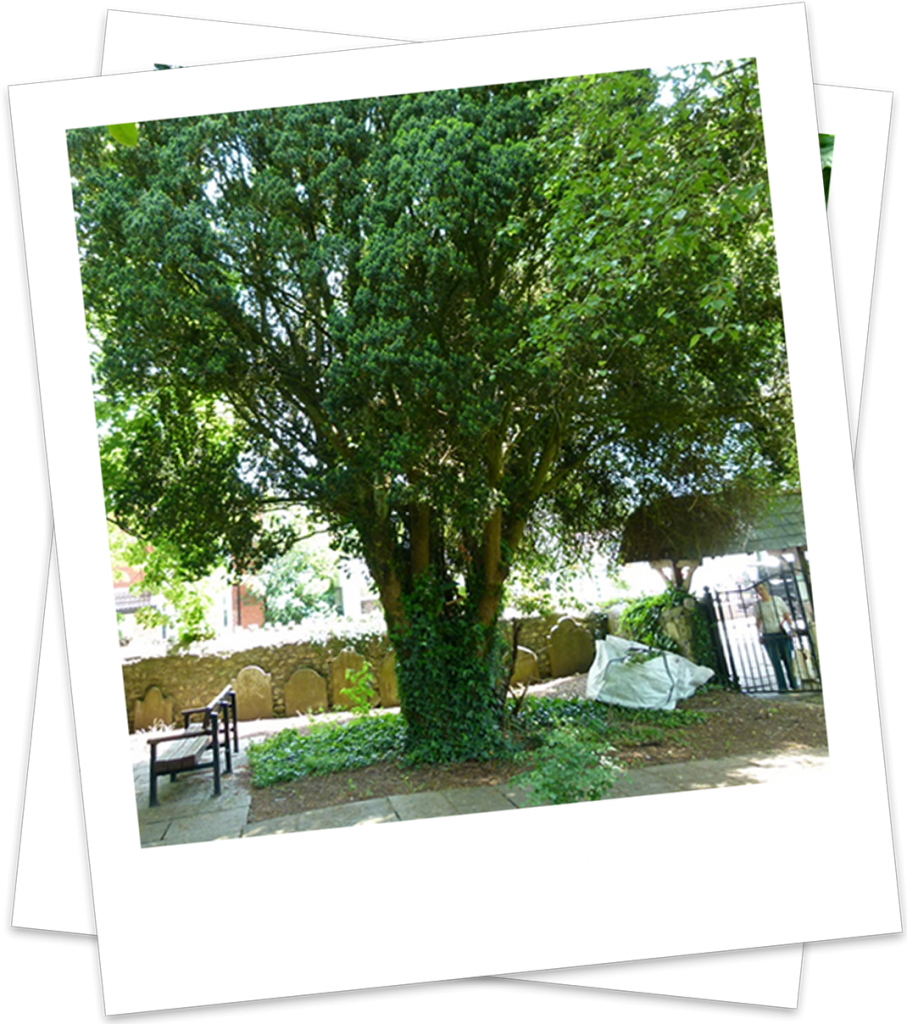
The 15th century porch and entrance to the church [3]: The entrance we now use to St. Mary’s Gardens is part of the 1970s renovations. If you want to follow our ancestors’ footsteps into church you have to walk along the path leading to the remains of the porch (be careful on the uneven path). The porch is the oldest part of what remains of the church.
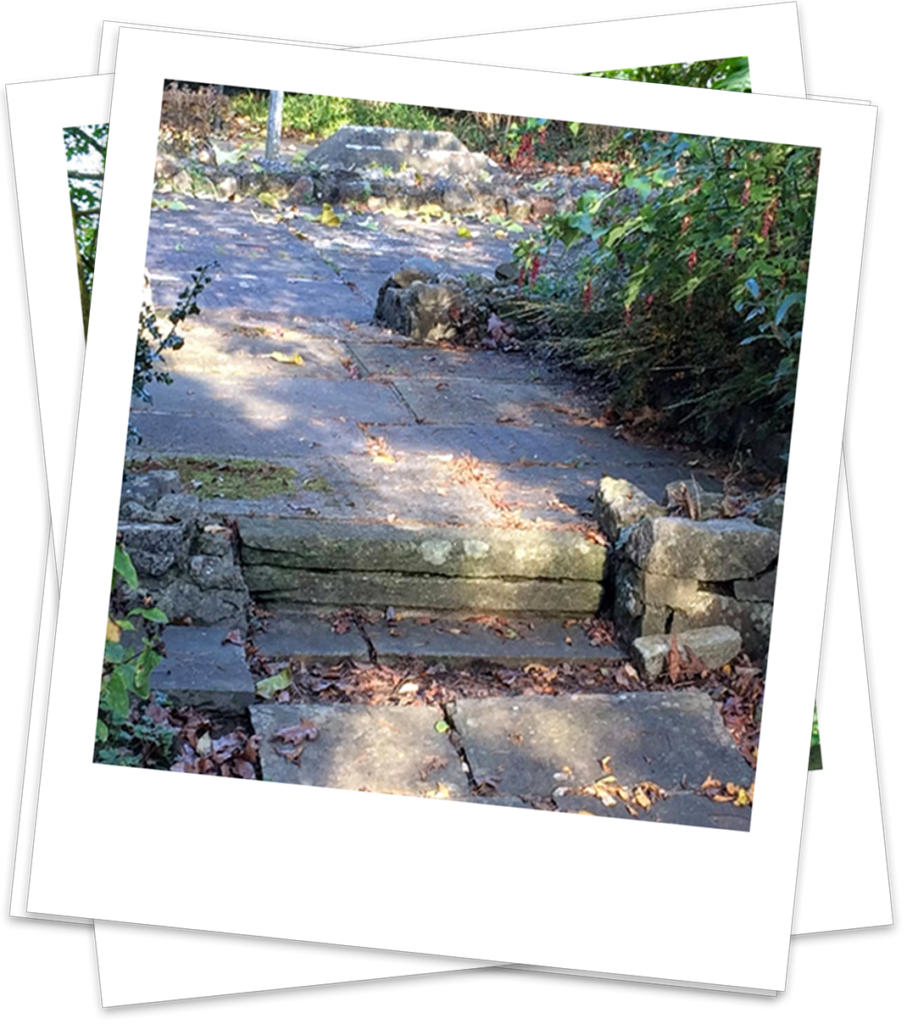
Just through the porch and on the left are the remains of the font [4] used for infant christenings – a touching reminder that the church was a place of joy and new beginnings as well as solemnity
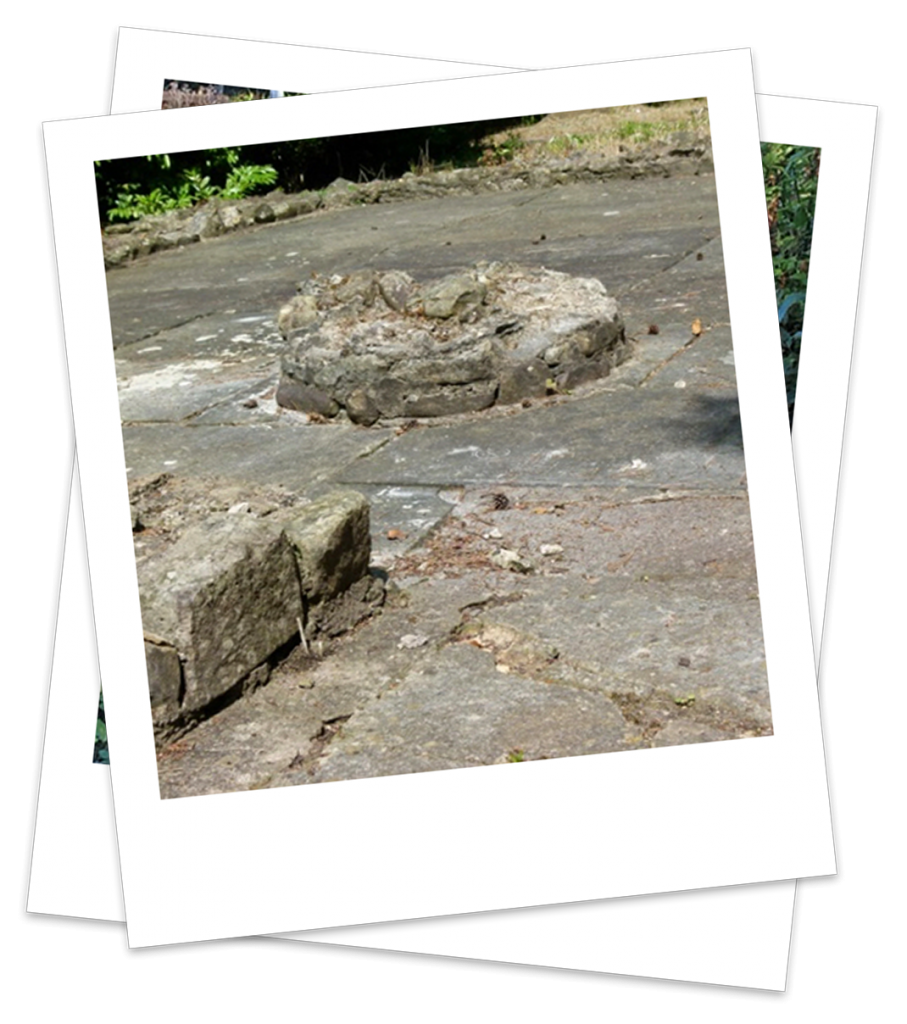
The Chancel [5]: At the opposite end of the church from the font was the Chancel in which stood the altar. Altars were traditionally placed at the eastern end of churches because it was closest to Jerusalem. This was the most sacred part of the church where the clergy carried out their rites. It was a step up (literally) from the Nave where the congregation worshipped.
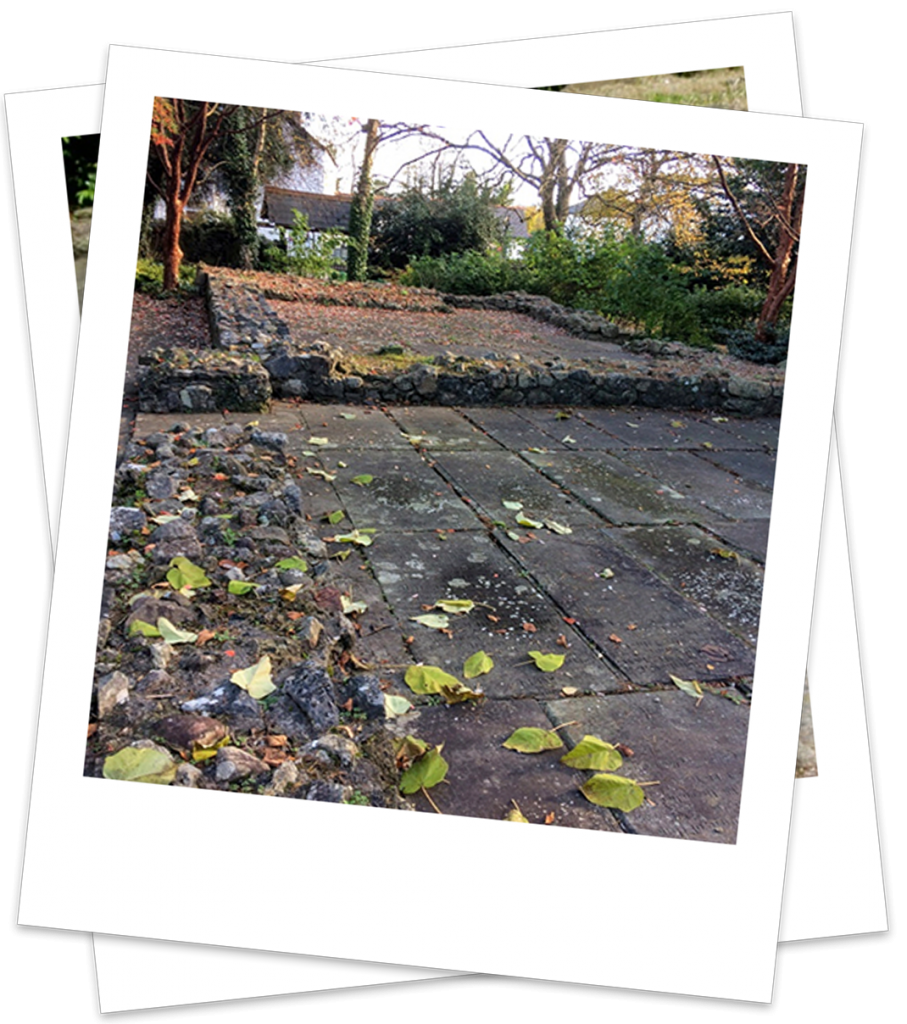
The Booker Tomb [6]: Left in place in the 1974 renovation this striking tomb commemorates three brothers and their families, all involved in managing the Melingriffiths Tinplate Works . It brought major employment to Whitchurch in the 19th century. They were philanthropic employers who owned three prestigious houses in the area. Their story is worth following up.
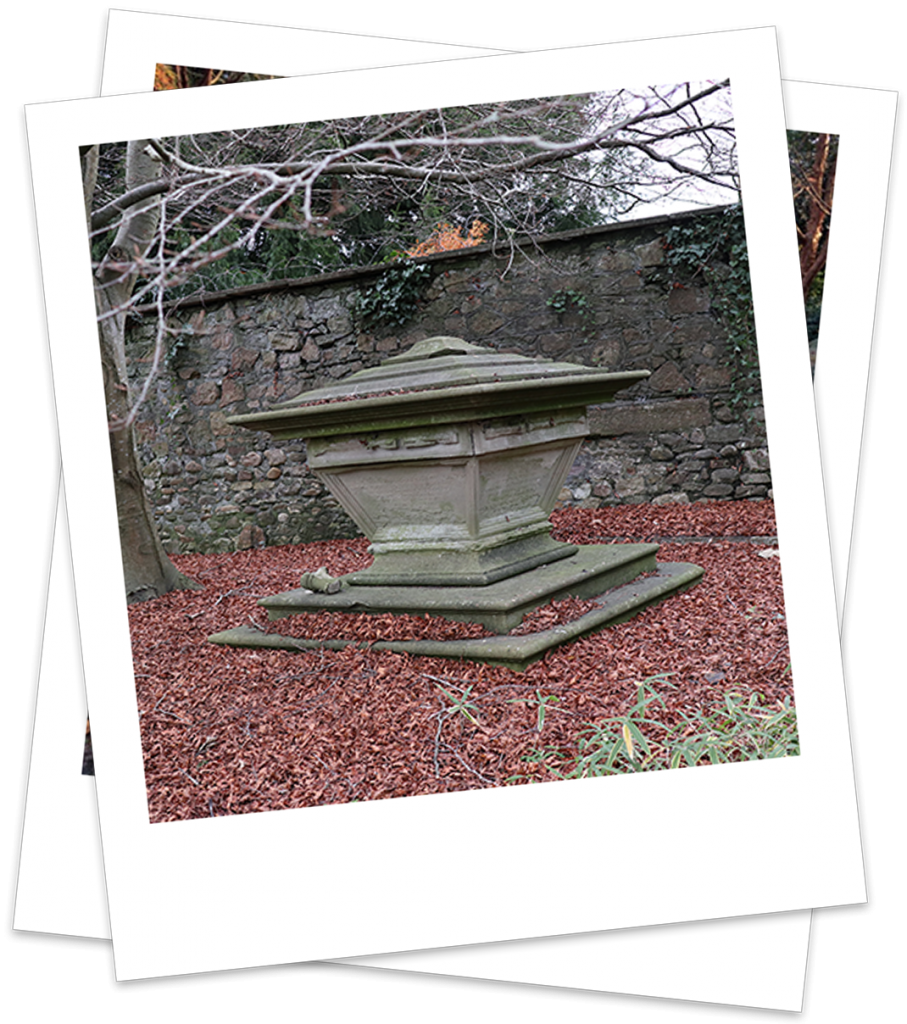
The Lewis Tombs [7]: Another prestigious local family, the Lewises were involved in Victorian politics at a local and national level. They counted Disraeli among their friends. Their extensive landholdings stretched from what is now the Aneurin Pub by the Gabalfa flyover to Greenmeadow, their magnificent Gothic mansion in Tongwynlais, now replaced by a housing estate.
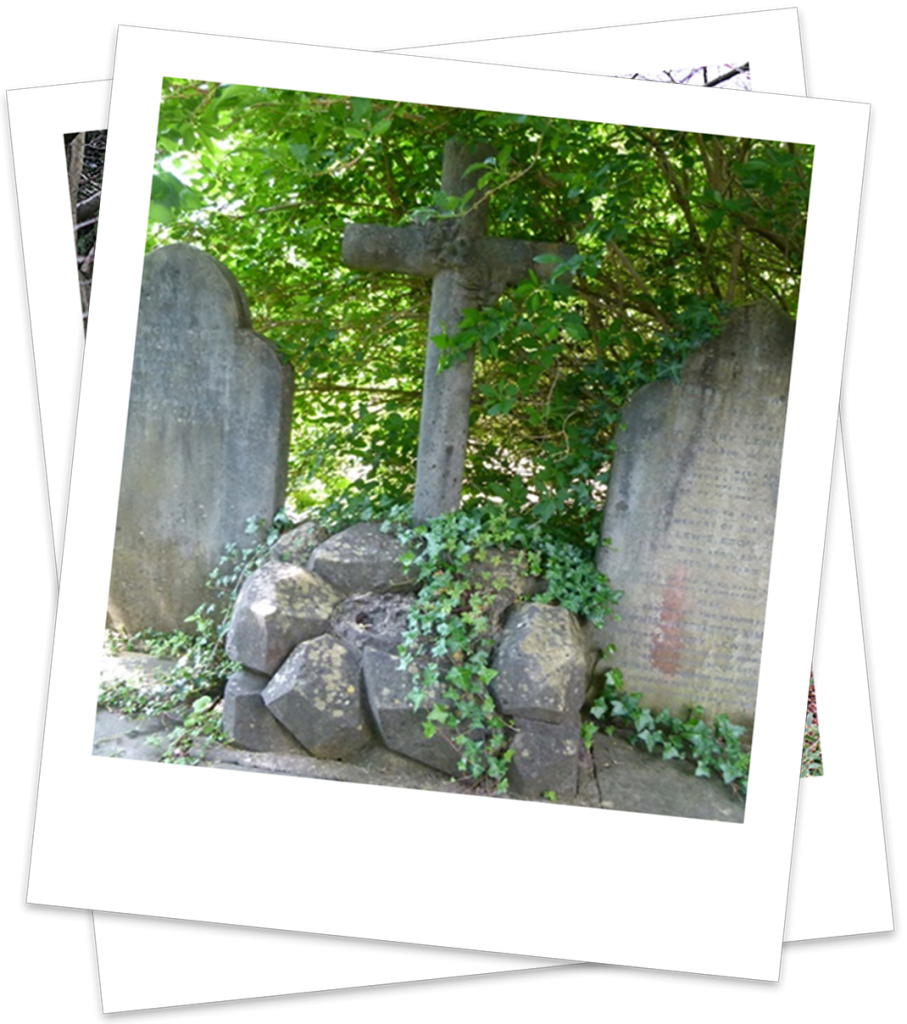
Thomas Matthew’s Grave [8a]: While, as you would expect, there is abundant evidence of Victorian infant mortality in this graveyard this gentleman, who died in 1839, bucked the trend, but a descendant of his whose inscription is on the same gravestone did not. Another infant is commemorated at [8b].
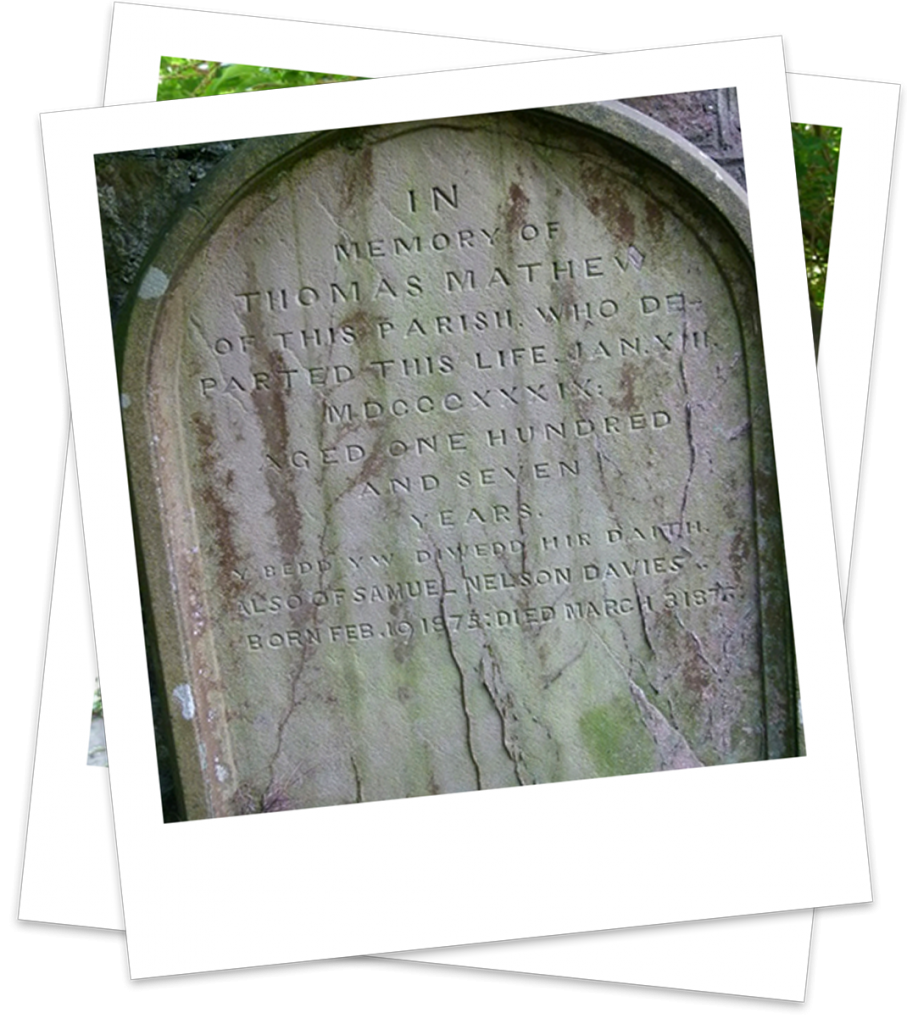
Llewellyn Llewellyn’s Grave [9]: a number of the gravestones tell us about local employment. This gentleman managed the Marquis of Bute’s woodlands.
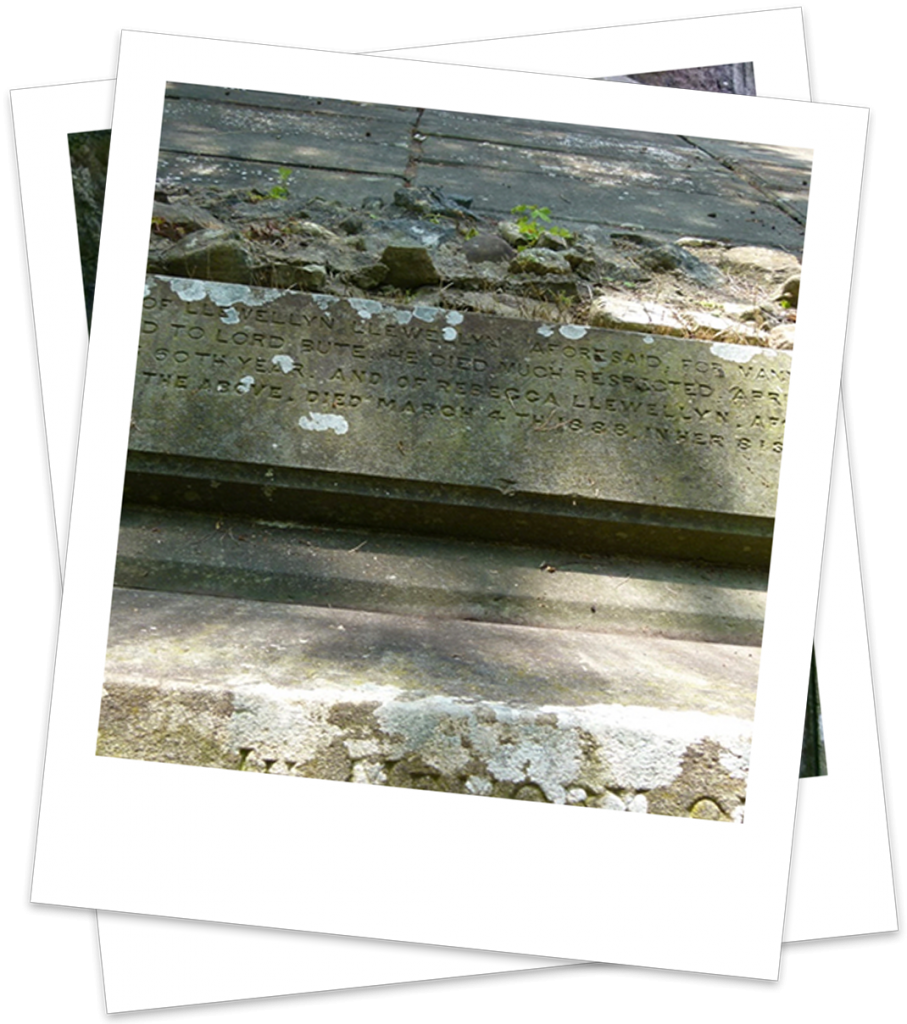
Welsh Language Gravestone [10]: . Early worshippers at St. Mary’s were Welsh speaking as made clear by the records of dispute with Cathedral authorities when English-speaking priests were assigned to Whitchurch. With the industrial revolution and the influx of incomers this changed and the majority of the tombstones that remain today are in English – but not all.
